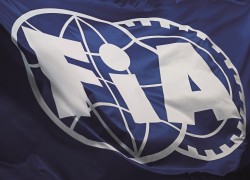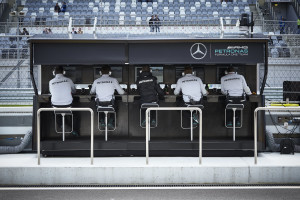
Formula One team bosses have voted against the halo head protection that was supposed to be on the cars in 2017.
In a meeting of the F1 Strategy Group in Geneva on Thursday 28 July 2016, the teams have voted against the head protection which underwent testing at the most recent Silverstone test.
The FIA could have pushed the regulation through on safety grounds but FIA President chose not to go against the vote.
The FIA, in a statement after the meeting, said that they would evaluate other options before a final confirmation.
“The Strategy Group agreed unanimously that the 2018 season will see the introduction of frontal cockpit protection for Formula One cars in order to significantly enhance the safety of drivers,” read the statement.
“It was decided that owing to the relatively short timeframe until the commencement of the 2017 Formula One season it would be prudent to use the remainder of this year and early next year to further evaluate the full potential of all options before final confirmation.
“This will include undertaking multiple on-track tests of the ‘Halo’ system in practice sessions during the rest of this season and during the first part of the 2017 season.
“While the Halo is currently the preferred option, as it provides the broadest solution to date, the consensus among the Strategy Group was that another year of development could result in an even more complete solution.
“Halo remains a strong option for introduction in 2018.”
In addition, the radio restrictions which have drawn the ire from the fans and teams, have now been relaxed and communication between pit and driver will be completely open. The only restriction being that no communication will be allowed between pit and driver on the formation lap before the race. Pit to car communications will also be made available at all times which should go down well with the fans.
 “At the request of the Teams and Commercial Rights Holder, the FIA has agreed to adopt a more liberal approach to the interpretation of Article 27.1 (that a driver must drive the car “alone and unaided”).,” said a statement by the FIA
“At the request of the Teams and Commercial Rights Holder, the FIA has agreed to adopt a more liberal approach to the interpretation of Article 27.1 (that a driver must drive the car “alone and unaided”).,” said a statement by the FIA
“With the exception of the period between the start of the formation lap and the start of the race, there will be no limitations on messages teams send to their drivers either by radio or pit board.
“This approach is aimed at providing improved content for fans and spectators, as teams will now be required to provide the Commercial Rights Holder with unrestricted access to their radio messages at all times that their cars are out of the garage.”
The radio restrictions do not need to be ratified by the F1 Commission as the restrictions formed part of a technical directive by Race Director Charlie Whiting. We should see an increase in radio communications from the German Grand Prix onwards.
The topic of policing track limits and penalties was also on the agenda. The argument of the teams was that it is difficult to judge if a driver has gained an advantage by running wide or not. The FIA were reluctant to implement this immediately as they wanted more time to investigate the implications this move may have going forward.


